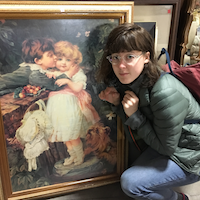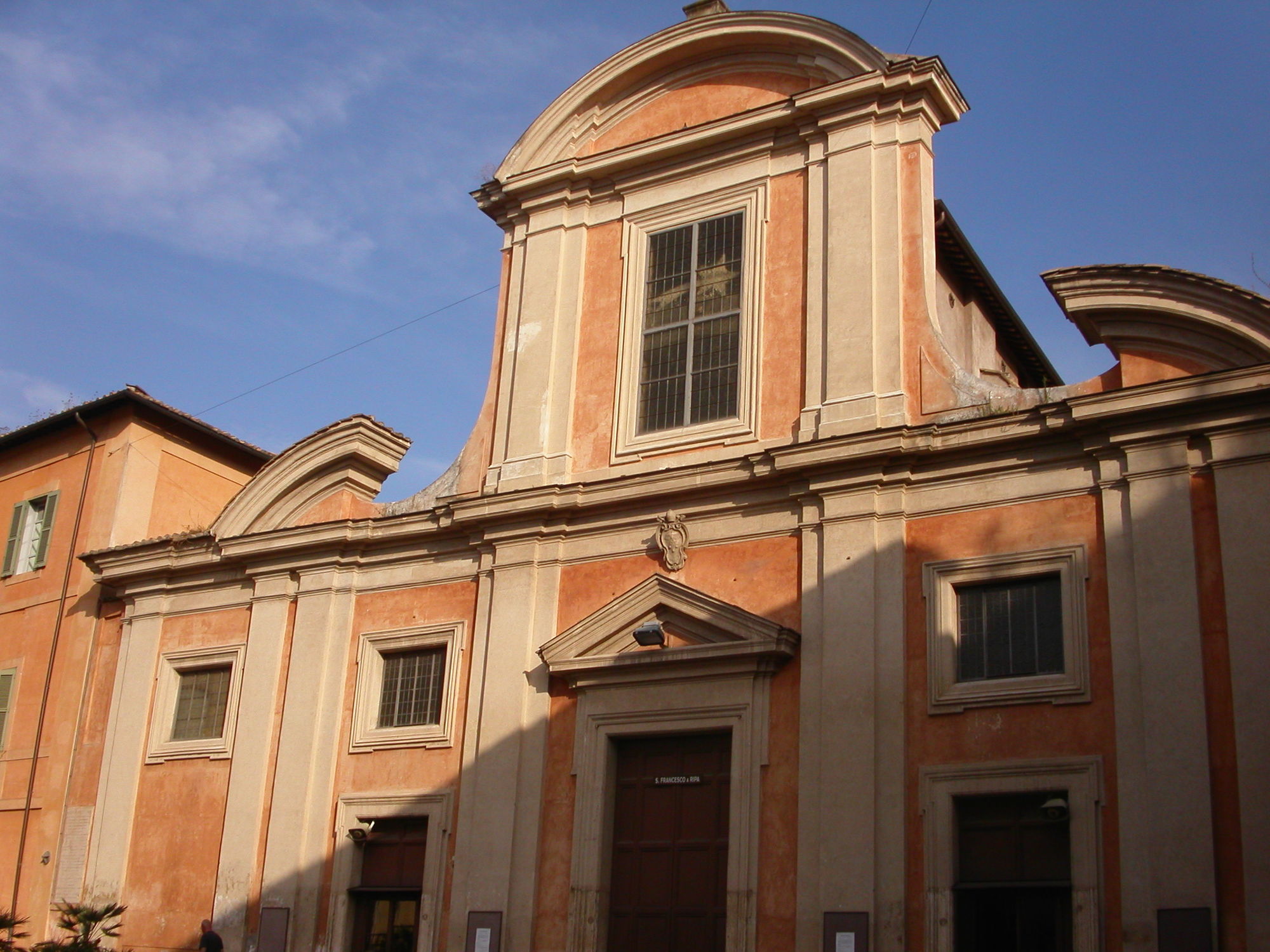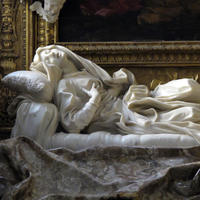More about San Francesco a Ripa
Works at San Francesco a Ripa

Contributor
If you can navigate Rome's complex maze of buses, taxis and bustling streets long enough to find yourself in the suburban neighborhood of Trastevere, you may find San Francesco a Ripa.
Sure, it may not look like much from the outside, and it's significantly less famous than the heavy-hitters―St. Peters, Villa Borghese―nor does it make the list of "Top Places to Visit in Rome on a Time Crunch," but in my opinion it's a must-see if you find yourself frolicking around la città eterna. For starters, you don't have to pay (pro tip: most churches in Italy are free), and you probably won't have to wait in a two hour long line to enter. I'm looking at you, Vatican City.
The complex was originally the San Biagio hospice, controlled by the Benedictines, but in 1229 when their power in Rome began to wean, Pope Gregory XI forcibly transferred the power of the property to the Franciscan order (oh snap), which was recently established by Saint Francis of Assisi, one of the more well-known Saints in Italy today. They immediately began work expanding the hospice into a rather large namesake church, San Francesco a Ripa. Superstar famous for preaching tolerance, compassion, and the importance of seeking alms, Saint Francis was also responsible for creating a renowned and breathtaking basilica in Assisi, which today is one of the most important Christian pilgrimage sites in Italy (and there are a LOT of churches in Italy) and a UNESCO world heritage site. Obvi he went all out for his hometown.
Before Frank got famous, he came to stay multiple times in this hospice in Rome to tend to lepers and wait for then Pope Innocent III to approve his new monastic order. They must have not known at the time who he would become, or maybe the five-star suite with luxurious bedding and chocolate mints on the pillows fell through, as he ended up having to make do with a bare bones cell, a rock pillow, and no bedding. But wait―Francis really liked these accommodations and came back to stay here multiple times between 1209 and 1223. We're not really convinced that rocks are nice to sleep on, but he may have been onto something: pillows can be washed and forgotten but rocks live on in infamy. You can still see the rock that held his head in all its glory when visiting the church.
The other attraction that keeps visitors making the journey to the ‘burbs is a well-known (and pretty risquè) sculpture by the infamous Bernini. His interpretation of the Blessed Ludovica Albertoni, which adorns the tomb of the Saint, is one of the most masterfully crafted pieces of his career and just one in a series of slightly scandalous sculptures created by the horny baroque master that not-so-subtly alludes to carnal pleasures. She sure is a beaut, though.
Fast forward eight centuries and the friars of San Francesco a Ripa decided to redecorate the cell that St. Francis stayed in all those years ago. It was pretty much falling apart, and since 'shabby chic' went out of style a while back, they set out to update the whole thing in an effort to preserve its history for future generations. In keeping with Francis' flawless example, they funded this project entirely from donations. From Kickstarter. You can fund anything on Kickstarter. I saw someone fund their Las Vegas birthday party one time. Why didn't they ask for money from the city, you may ask? Well, it's not what Francis would have done. Plus, there's no bureaucracy in crowd funding!
Sources
- Pinton, Daniele. Bernini: sculptor and architect: art courses. Roma: ATS Italia Editrice, 2009.
- La Rosa, Frank. "San Francesco A Ripa in Trastevere." Italian American bilingual news source. October 01, 2014. Accessed July 04, 2017. http://www.italoamericano.org/story/2013-6-21/SanFrancesco-A-Ripa.
- "San Francesco d'Assisi a Ripa Grande." Churches of Rome Wiki. Accessed July 04, 2017. http://romanchurches.wikia.com/wiki/San_Francesco_d%27Assisi_a_Ripa_Gra….
- Siniscalco, Raffaello. "St. Francis in Rome- The Restoration." Kickstarter. Accessed July 04, 2017. https://www.kickstarter.com/projects/671087979/st-francis-in-rome-the-r….
Featured Content
Here is what Wikipedia says about San Francesco a Ripa
San Francesco a Ripa is a church in Rome, Italy. It is dedicated to Francis of Assisi who once stayed at the adjacent convent. The term Ripa refers to the nearby riverbank of the Tiber.
Check out the full Wikipedia article about San Francesco a Ripa











